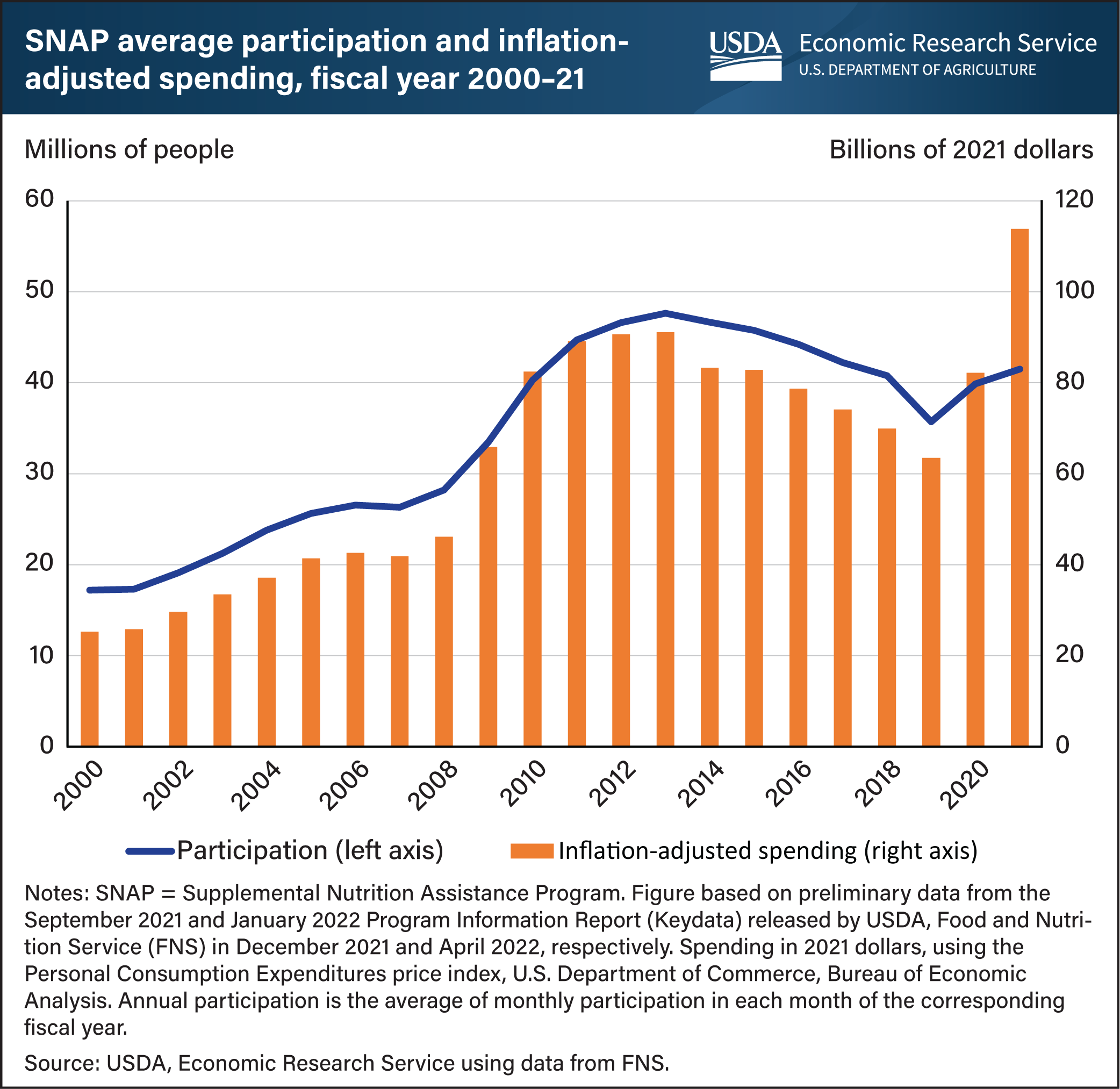SNAP spending reached record high of $113.8 billion in fiscal year 2021
- by Jordan W. Jones
- 7/25/2022

The Supplemental Nutrition Assistance Program (SNAP) is the largest domestic nutrition assistance program, accounting for about two-thirds of USDA spending on food and nutrition assistance in recent years. Fiscal year (FY) 2021 marked record Federal spending on SNAP and the second year of increased spending and participation since 2019. This reflects the economic downturn as well as the temporary expansion of SNAP benefits following the onset of the Coronavirus (COVID-19) pandemic. SNAP benefits were expanded in two major ways. First, emergency allotments (EAs) were issued beginning in FY 2020. EAs supplement SNAP recipients’ regular benefits—which are based on household size and net income—bringing all households’ total monthly benefit to the maximum benefit amount if they did not already receive that amount. EAs were later revised in FY 2021 to provide a minimum of $95 in monthly benefits to all recipients. By the end of FY 2021, eight States stopped providing EAs. Second, the maximum SNAP benefit was temporarily increased by 15 percent in FY 2021. Spending on SNAP in FY 2021 totaled $113.8 billion, 38 percent more than the previous year and 25 percent more than the previous high in FY 2013, adjusting for inflation. Average participation was 41.5 million people in FY 2021, or 12.5 percent of the U.S. resident population, roughly 6 million fewer than the record high participation of FY 2013. This chart is based on a chart in the USDA, Economic Research Service’s Food and Nutrition Assistance Landscape: Fiscal Year 2021 Annual Report, released June 22, 2022.

